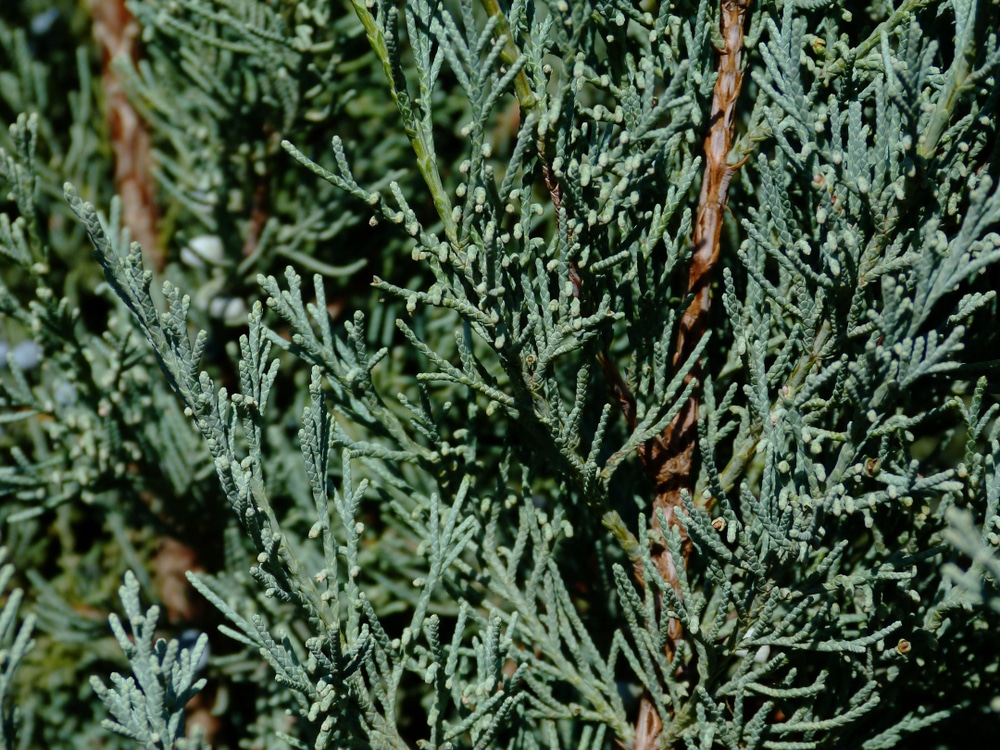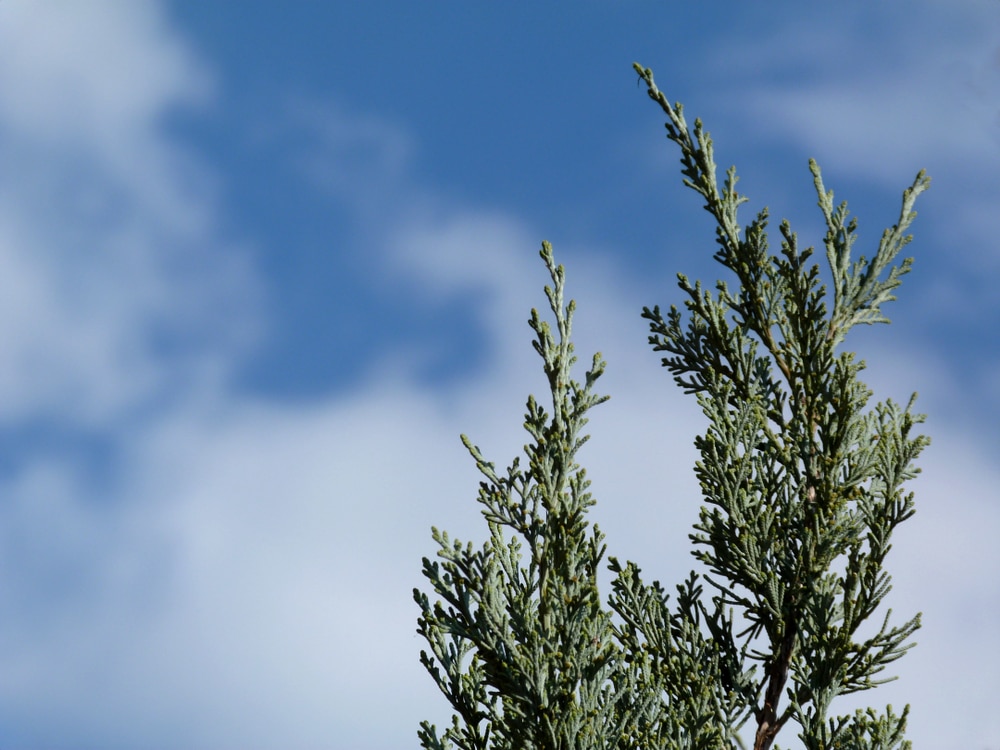Most Juniper species thrive in full sun and, after reaching maturity, need little maintenance and little water. One popular option, Wichita Blue Juniper, grows natively in the western United States. Despite the overall hardiness of the species, Wichita Blue Juniper problems are common, but many have solutions.
Since many of the problems Wichita Blue Junipers encounter result from overwatering or wet conditions, picking a spot with well-draining soil prevents some of these issues before they start. Air circulation is another important factor. Flowing air helps to keep foliage dry and healthy.
Diseases

Wichita Blue Juniper, also known as Rocky Mountain Juniper, is susceptible to several diseases. These include fungal diseases, many of which take hold during or after rainy weather.
Cedar-Apple Rust
A fungal disease spread back and forth between juniper species and apples. While eastern varieties of juniper are more commonly infected, this is also one of Witchita Blue Junipers’ problems. Small galls form on the plant, which will produce orange spore tendrils.
Two similar types of rust affect Witchita Blue Juniper: hawthorn rust and quince rust, but cedar-apple rust is the most common.
Prevention & Treatment: Avoid planting apple trees and juniper close to one another or plant rust-resistant cultivars. If you notice a severe case, specific fungicides may also be used.
Cercospora Twig Blight
Another fungal disease, Cercospora Twig Blight, starts at the bottom interior of the plant, working its way up. Affected needles die off in the summer and appear brown while the tips of branchlets remain healthy.
Prevention & Treatment: Though fungicides can be used for severe cases, pruning usually stops the spread of this disease.
Kabatina Twig Blight & Phomopsis Tip Blight
Two fungal diseases with similar symptoms, both of these blights start at the outer branches targeting new growth. Kabatina targets slightly older growth. Each disease slowly kills off branches resulting in brown twigs.
Prevention & Treatment: Pruning and fungicide for extreme cases help combat these blights. Also, ensure junipers are not overcrowded or overwatered as these create ideal conditions for disease.
Phytophthora Root Rot
Phytophthora Root Rot is one of the most detrimental Witchita Blue Junipers’ problems. A mold spread through soil causes the juniper to slowly die as the roots can no longer take in water when the roots rot away.
Prevention & Treatment: Presistantly wet soil, especially in warm weather, creates ideal conditions for Phytophthora to spread, especially in warm weather. Preventative measures like amending soil and replacing infected soil can help stop the disease.
Pests
Several pests target juniper varieties, most of which can be controlled with specially formulated sprays, but other natural methods work for some pest removal.
- Bagworm: Named for the silken bags larvae carry to pupate, Bagworms damage juniper when they eat the plant. Female Bagworms lay eggs in these bags, removing them before warm weather cuts down on the population.
- Juniper Scale: Scale feed on plant sap, slowing juniper growth. Over time an infestation of scale can kill a plant.
- Spruce Spider Mite: These little mites suck the sap out of plants, and a large enough infestation can kill a Wichita Blue Juniper. Look specifically for miticides to target these creatures or add ladybugs that consume mites.
Other Factors
Needling brown is a typical result of many Wichita Blue Juniper problems. If you don’t believe that cause originates from disease or pests, consider these two options for the source of the issue.
Salt
Junipers are susceptible to damage when exposed to excessive salt. Your Wichita Blue Juniper may soak up run-off from salt used to melt ice. Dogs’ urine also causes damage of this kind. Rinse the area around the base and trim browned leaflets to prevent further problems.
Water
Even the hardiest of junipers may brown during drought. Conversely, they may also brown as a result of overwatering.
In Conclusion
Picking the proper conditions for juniper prevent Wichita Blue Juniper problems before they start. Well-draining and drier spots work best! If your junipers already display symptoms of these problems, look for treatment options summarized above. Pruning back brown twigs also helps prevent the spread of most issues.
